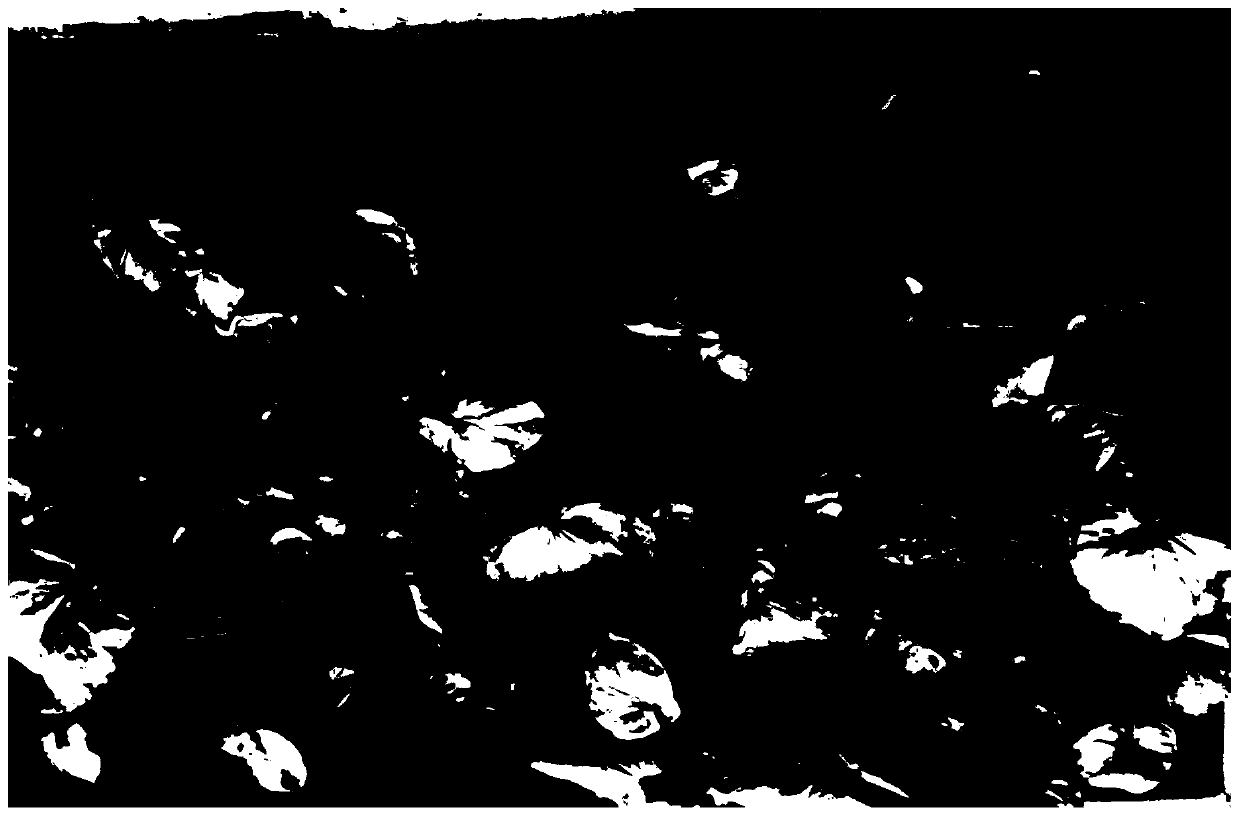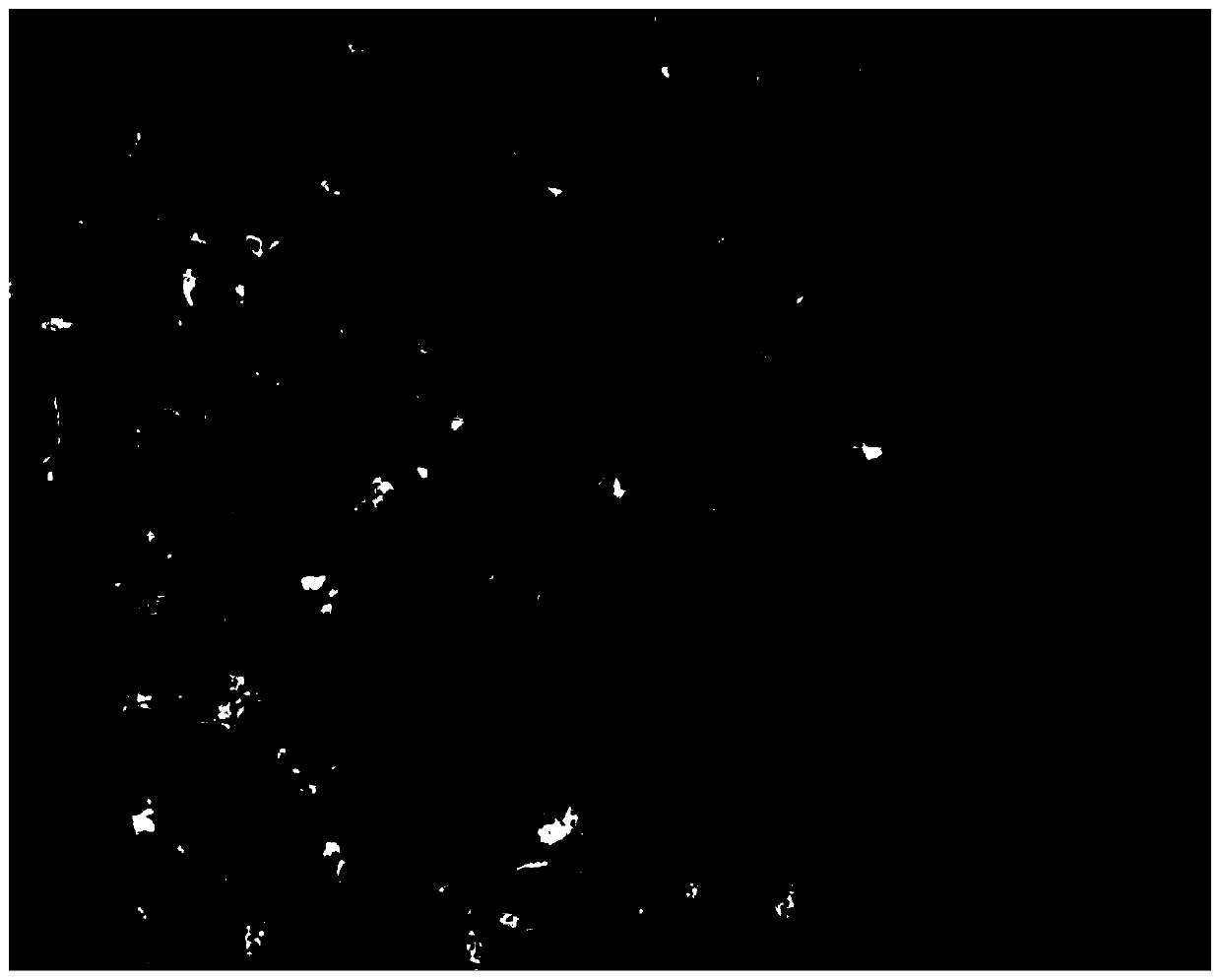Interplanting culture method of akebia trifoliata and pinellia ternate
A technology of Akebia trifoliate and cultivation method, which is applied in the interplanting field of Akebia trifoliate and pinellia, can solve the problems of low output, achieve the effects of reducing costs, improving water retention, fertilizer retention and air permeability, and less occurrence of diseases
- Summary
- Abstract
- Description
- Claims
- Application Information
AI Technical Summary
Problems solved by technology
Method used
Image
Examples
Embodiment 1
[0026] Step 1, raising seedlings of Akebia clover: Take Akebia clover seeds in September-October, treat with NaOH, disinfect with potassium permanganate, and then carry out stratification in an ecological incubator at 8-10 degrees, 1-2 months, Germinate and transplant into nutrient pots.
[0027] Step 2. From March to April in spring, transplant Akebia clover seedlings near the scaffolding, and perform daily management such as weeding, watering, and fertilizing. Akebia trifoliate is a woody vine, which is planted at 25-35cm under the trellis, with a planting density of 1.5m (spacing between plants and rows being 1.5m), and a canopy density of 35-45%.
[0028] Step 3, under the scaffolding, place a three-dimensional seedling stand, and place planting grooves on the three-dimensional seedling stand, and the three-dimensional seedling stand includes a support frame and a plurality of planting grooves arranged on the support frame, and the planting grooves It is detachably connec...
Embodiment 2
[0045] Step 1, Akebia trifoliate seedling cultivation: Get the Akebia trifoliate seed in September-October, process through NaOH, high
[0046] Potassium manganate disinfection, and then stratification in an 8-10 degree ecological incubator, 1-2 months, germination, and transplanting into a nutrient bowl.
[0047]Step 2. From March to April in spring, transplant Akebia clover seedlings near the scaffolding, and perform daily management such as weeding, watering, and fertilizing.
[0048] Step 3, under the scaffolding, place a three-dimensional seedling stand, place a planting groove on the three-dimensional seedling stand, the depth of the groove is more than 25cm, and be covered with a cultivation substrate, and the cultivation substrate includes 40 parts of peat soil and 30 parts of coconut soil by parts by weight. And 20 organic fertilizers, the organic fertilizer is the fertilizer formed after fermentation and decomposing of rice straw, corn straw, peanut straw and live ba...
Embodiment 3
[0062] Step 1, Akebia trifoliate seedling cultivation: Get the Akebia trifoliate seed in September-October, process through NaOH, high
[0063] Potassium manganate disinfection, and then stratification in an 8-10 degree ecological incubator, 1-2 months, germination, and transplanting into a nutrient bowl.
[0064] Step 2. From March to April in spring, transplant Akebia clover seedlings near the scaffolding, and perform daily management such as weeding, watering, and fertilizing.
[0065] Step 3, under the scaffolding, place a three-dimensional seedling stand, place a planting groove on the three-dimensional seedling stand, the depth of the groove is more than 25cm, and be covered with a cultivation substrate, and the cultivation substrate includes 50 parts of peat soil and 40 parts of coconut soil by weight. And 30 organic fertilizers, the organic fertilizer is the fertilizer formed after fermentation and decomposing of rice straw, corn stalks, peanut stalks and live bacteria...
PUM
 Login to View More
Login to View More Abstract
Description
Claims
Application Information
 Login to View More
Login to View More - R&D
- Intellectual Property
- Life Sciences
- Materials
- Tech Scout
- Unparalleled Data Quality
- Higher Quality Content
- 60% Fewer Hallucinations
Browse by: Latest US Patents, China's latest patents, Technical Efficacy Thesaurus, Application Domain, Technology Topic, Popular Technical Reports.
© 2025 PatSnap. All rights reserved.Legal|Privacy policy|Modern Slavery Act Transparency Statement|Sitemap|About US| Contact US: help@patsnap.com



